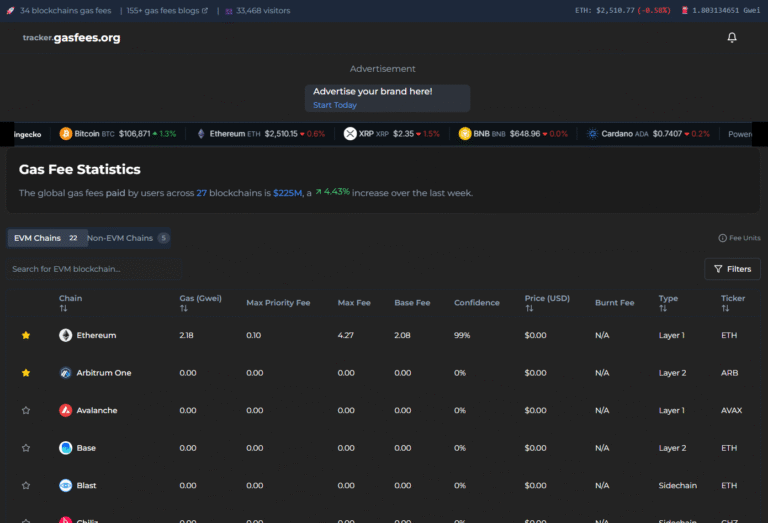
What Are EthereumPOW Gas Fees?
Written By: Mr. GasMan
Unleashing the Power of EthereumPOW: But What About the Gas?
Imagine a high-octane race track – roaring engines, sleek machines, and exhilarating speeds. EthereumPOW, the Proof-of-Work fork of the Ethereum blockchain, is just that – a high-performance platform for decentralized applications and smart contracts. But like any high-powered engine, it needs fuel to run. That fuel, in the EthereumPOW world, comes in the form of gas fees.
So, what exactly are gas fees? Think of them as the toll booth on the EthereumPOW highway. Every transaction, from sending ETH to deploying a smart contract, requires these fees. They incentivize miners to validate transactions and secure the network, ensuring its smooth operation.
Gas Fees: Demystifying the Equation
Understanding how gas fees are calculated is crucial for navigating the EthereumPOW ecosystem. The equation involves two key components:
- Gas: The unit of computational effort required for a transaction. More complex transactions, like smart contract execution, require more gas.
- Gwei: The denomination in which gas fees are paid. One gwei is equal to one billionth of an Ether (ETH).
The final gas fee is determined by multiplying the gas used by the gwei price. The gwei price, in turn, fluctuates based on network demand. When the network is congested, miners demand higher gwei prices to prioritize transactions.
Why Do Gas Fees Matter? A Balancing Act
Gas fees play a pivotal role in the EthereumPOW ecosystem, but their volatility can be both a blessing and a curse.
The Benefits:
- Security: High gas fees discourage spam and malicious attacks, contributing to a robust and secure network.
- Decentralization: Miners compete for transaction fees, ensuring no single entity controls the network.
- Market-driven Efficiency: Fluctuating gas prices incentivize efficient use of network resources.
The Challenges:
- Accessibility: High gas fees can create barriers for entry, particularly for small transactions or users with limited funds.
- Price Volatility: Unpredictable gas prices can make budgeting and planning difficult.
- Scalability: As network usage increases, so do gas fees, potentially hindering EthereumPOW’s scalability.
Navigating the EthereumPOW Gas Landscape: Tips for Every Driver
While gas fees can be unpredictable, several strategies can help you navigate the EthereumPOW highway more efficiently:
- Plan your transactions: Schedule transactions during off-peak hours when gas prices are typically lower.
- Utilize gas estimation tools: Tools like Gas Now and ETH Gas Station can help you estimate gas fees for your transaction.
- Consider alternative scaling solutions: Layer 2 networks like Polygon and Optimism offer lower gas fees for specific use cases.
- Stay informed: Keep track of EthereumPOW developments and potential improvements to the gas fee system.
The Future of Gas Fees: Towards a Smoother Ride
The EthereumPOW community is actively exploring solutions to address gas fee challenges. The transition to Proof-of-Stake (PoS), potentially in the future, could significantly reduce gas fees by replacing energy-intensive mining with a more efficient staking mechanism. Additionally, scaling solutions like Layer 2 networks and sharding are continuously being developed to improve transaction throughput and lower costs.
Ultimately, gas fees are an integral part of the EthereumPOW ecosystem, contributing to its security and decentralization. While they can be frustrating at times, understanding their purpose and employing intelligent strategies can help you navigate the network effectively and unlock the full potential of EthereumPOW’s revolutionary technology. So, buckle up, keep your gas gauge in check, and prepare for an exciting ride on the EthereumPOW highway!
Share this blog:









